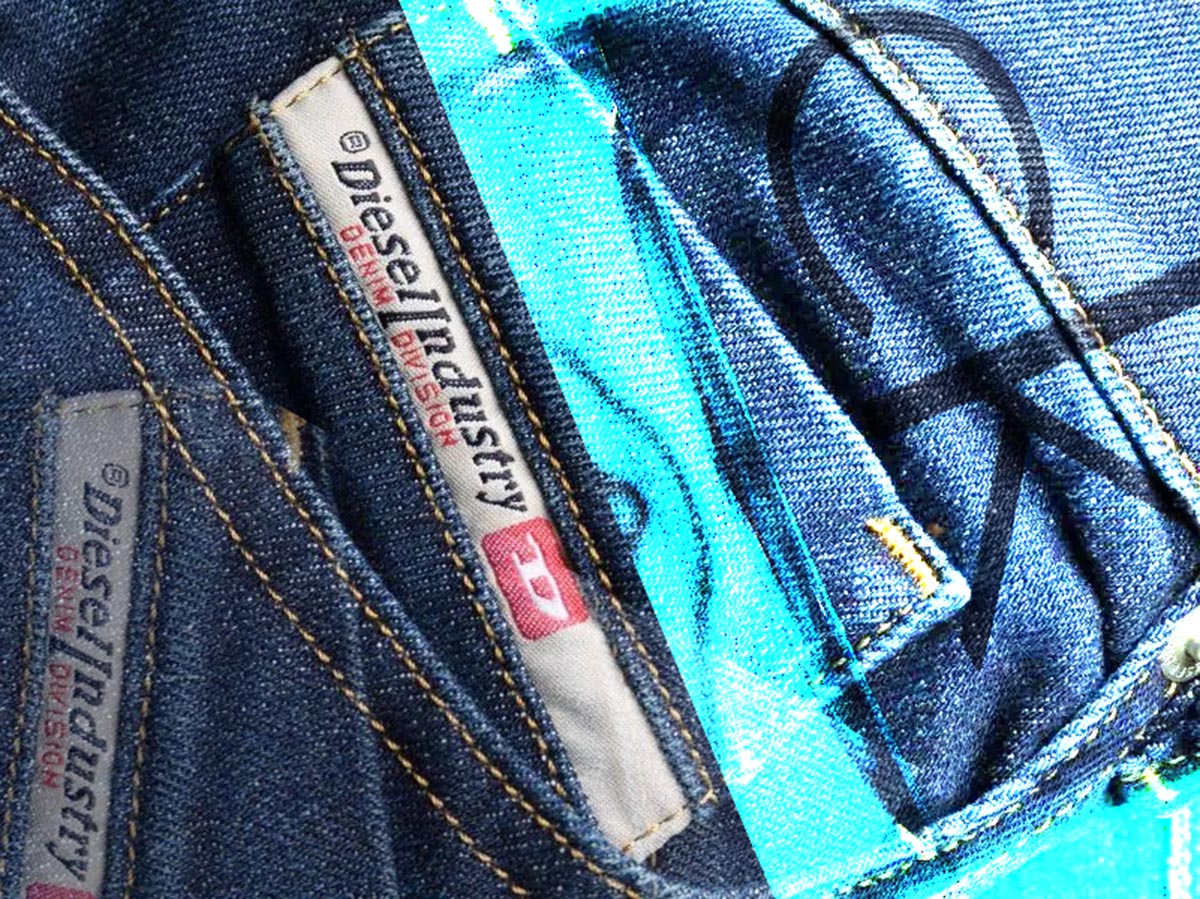The Court of Appeal of Milan, rejecting the main appeal and the cross-appeal, with the decision no. 1999/2023 has confirmed in full the decision no. 8845/2020 issued by the IP Court of Milan.
The case concerned a complaint brought by the well-known fashion house Diesel against the equally well-known fashion house Calvin Klein in connection with use by the latter of a so-called “stripe” (i.e,. a fabric label/stripe) placed on a front pocket of trousers manufactured by Calvin Klein.
According to Diesel, Calvin Klein’s stripe differed from two Italian position marks, having as object two stripes registered by Diesel in Italy (after years of intensive use on the market since at least 1988), only by being horizontal (whereas Diesel’s signs are slanted). Diesel claimed that such behavior of Calvin Kleim amounted to trademark infringement and an act of unfair competition.
We will focus here only on the claims/exceptions relating to trademarks (for the sake of completeness, I point out that Diesel’s claim of unfair competition was rejected).
Calvin Klein claimed that Diesel’s position marks were deprived of distinctive character and thus valid, since the stripe must instead be qualified as a mere ornamental element, widely used in the relevant market.
The IP Court of Milan, in the first decision, rejected Calvin Klein’s claim, stating that the stripe can be considered a valid position mark “given that in its description particular evidence is given both to the specific affixing of it on the fifth front pocket of a pair of jeans – regardless of the configuration of that garment – and in the particular position of the strip of fabric detectable in the image that appears inclined with respect to the upper edge of the pocket on which it is affixed” and that “it constitutes a capricious and inessential aspect, it is not the strip that makes up a label tout court that is protected, but rather a specific configuration of it indicated substantially in its position on the garment and in its inclination“.
To the above, the Court of Appeal, rejecting Calvin Klein’s cross-appeal, added that “certainly the use on the fifth pocket of a jeans of a label including the manufacturer’s name is a fairly common practice in the relevant sector; however, it cannot be said that all manufacturers follow this line” and that “the stripe is instead characterized as a sign positioned always in the same form and in the same place on an indeterminate number of different models of the same product. Such a sign ‘can only be perceived by the consumer, even by the most circumspect and shrewd, as a distinctive sign, as a trademark”, thus confirming the validity of Diesel’s trademarks.
While Diesel’s position marks were therefore considered valid, the infringement claim was rejected.
In particular, the Judges held that the only distinctive element of the position mark ”Diesel stripe” was its “diagonal orientation”, while the remaining characteristics, also taking into account the description of the mark in the registration certificates, were not considered relevant, also to “avoid an undue and indefinite extension of protection”.
Consequently, taking into account the fact that Calvin Klein’s stripe is always placed on the trousers horizontally, the Court of Appeal excluded that it can be confusingly similar to Diesel’s diagonal stripe. The Court of Appeal added that, also on the basis of an examination of the overall impression given by the signs, a likelihood of confusion for the relevant consumers must be excluded, taking into account the fact that the Calvin Klein stripe has characteristics (of actual positioning and color choices of the stripe in relation to those of the trousers on which it is affixed) which are different from the Diesel stripe and, above all, taking into account that the inside the Calvin Klein stripe is always printed the word element ‘Calvin Klein’ – an element which allows consumers (considered to have a high degree of attention, due to the fact that the garments in question are high-end) to distinguish the sources of the goods.
In the light of the above I would point out that position trademarks, although “non-traditional marks”, can be considered valid insofar as they are well described, correspond to signs that are actually distinctive and not mere ornamental elements of the goods, the use of which should not be common on the market. At the same time, in practice, position marks are considered “weak marks” and therefore in order to be considered infringed a very high degree of similarity between contested signs (both in terms of positioning and overall impression) is necessary.




